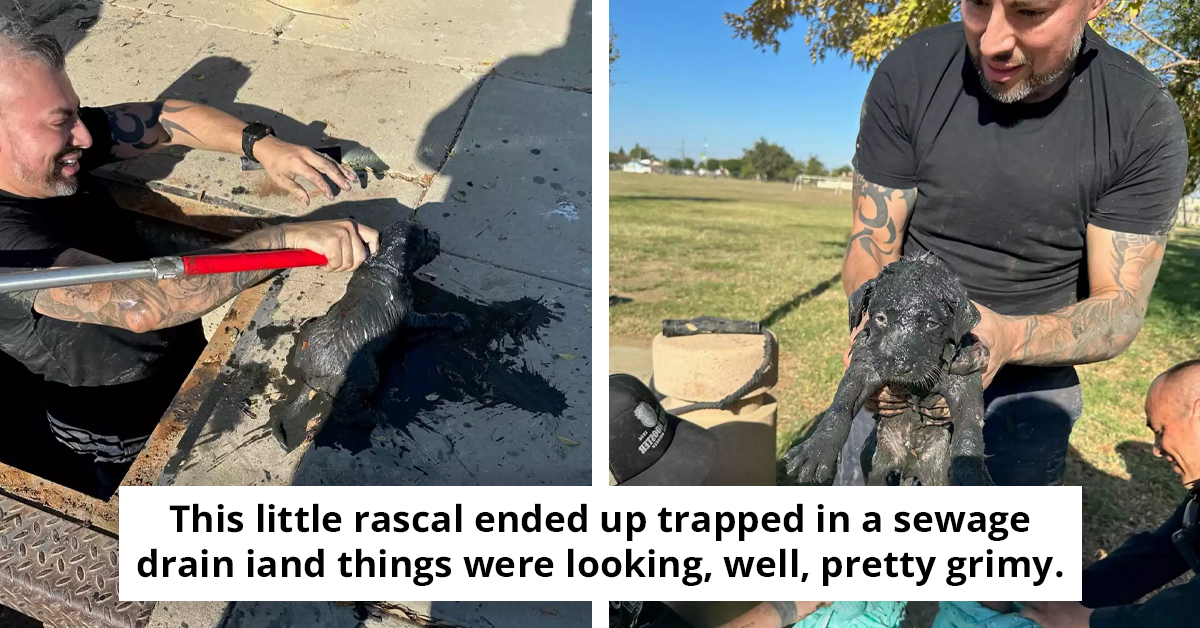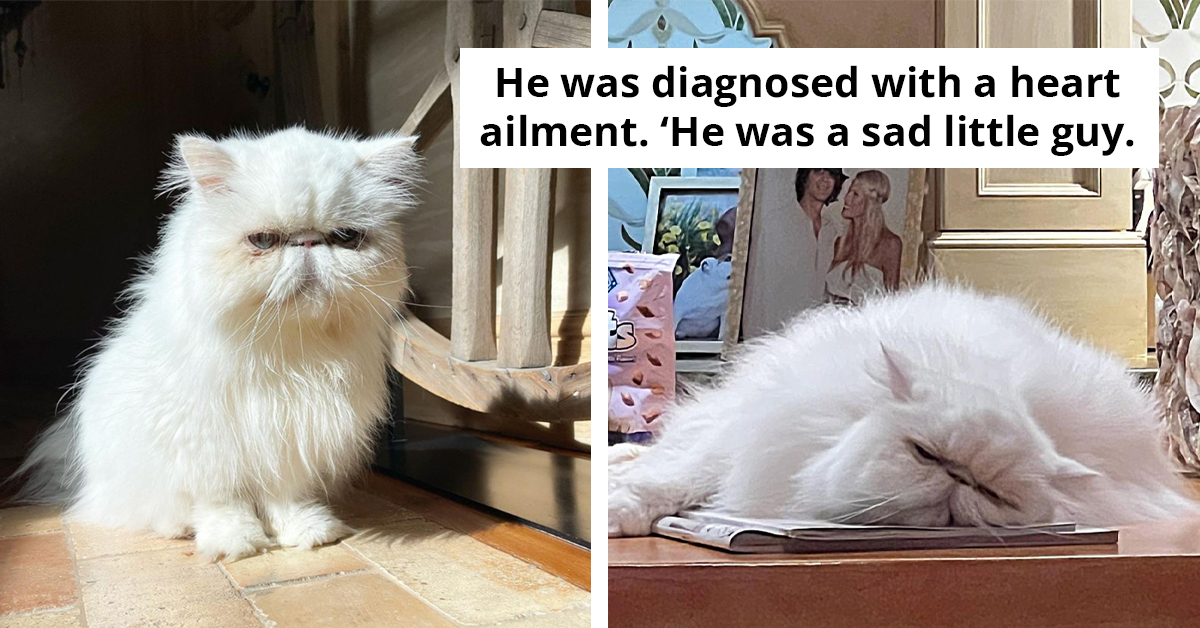Redditor Wants To Clip Bags On His Assistance Dog's Cape; His Mom Says Extra Weight Is A Bad Idea
Assistance dogs are more than just pets; they are trained to assist people with disabilities or medical conditions in performing daily tasks, alerting them to emergencies, and providing emotional support. From guiding visually impaired individuals to retrieving dropped items for those with mobility issues, these highly trained dogs can improve their handlers' quality of life and independence.
OP, a 22-year-old male, is considering getting his 10-month-old puppy, who is a certified assistance dog, a clearly labeled cape and small bags that can be attached to her main vest. He wants to store her transport and his medical card in the bags, as well as some lightweight additional items.
However, his mother disagrees with his plan, stating that he would be treating the puppy like a pack horse. The puppy is a 15.5-kilogram border collie and is cleared for public access.
OP believes that his puppy wouldn't mind the extra weight, as she loves her work, and it wouldn't be for mobility purposes. Nonetheless, he is questioning whether he would be in the wrong for making his puppy carry some of their gear.
He clarifies that the cape is a small vest attachment that is lightweight and breathable, and the bags would weigh less than a kilogram. OP already carries most of their gear, including water bottles, a container for his puppy to drink from, and his wallet and ID.
The puppy already carries her poop bags, and the additional weight wouldn't be a significant burden. Read the story and tell us what you think.
OP asks:

OP is considering getting his 10-month-old puppy, who is a certified assistance dog, a clearly labeled cape and small bags that can be attached to her main vest

However, his mother disagrees with his plan, stating that he would be treating the puppy like a pack horse. The puppy is a 15.5-kilogram border collie and is cleared for public access.

The Role of Assistance Animals in Mental Health
Assistance animals play a crucial role in supporting individuals with various mental and physical health challenges. Research from the University of Minnesota highlights how trained therapy dogs can provide emotional support, reduce anxiety, and enhance overall well-being. In this context, the decision to modify the assistance dog's equipment raises important questions about its impact on the dog's ability to perform its tasks.
Understanding the unique needs of assistance animals is essential for ensuring both their well-being and their effectiveness in supporting their owners.
Understanding Assistance Animals and Their Roles
The debate surrounding the use of assistance dogs and their capabilities highlights broader societal issues regarding accessibility and support. Research has shown that properly trained assistance animals can significantly enhance the quality of life for individuals with disabilities.
According to Dr. Daniel Gilbert, a happiness researcher, "Assistance animals not only provide physical support but also contribute to emotional well-being, helping to alleviate feelings of anxiety and loneliness." This sentiment is echoed by Dr. Barbara Fredrickson, a positive psychology researcher, who states, "The presence of a trained assistance animal can foster a sense of connection and improve overall mental health."
OP posted an edit, specifying what would be in the bags

OP carries most of their gear

OP has offered the following explanation for why they think they might be the a-hole:

Studies indicate that the presence of assistance animals can significantly improve the quality of life for individuals with disabilities. According to Dr. Susan David, an emotional agility expert, "Assistance dogs provide not only companionship but also a sense of security that can help individuals manage stress and anxiety." This underscores the importance of ensuring that the dog's needs are met, particularly when considering modifications to its equipment, as the right support can enhance the overall well-being of both the handler and the animal.
This situation also sheds light on differing perceptions of an animal's capabilities and weight limits. Studies suggest that individuals often face skepticism regarding their needs or the utility of assistance animals based on misinformation.
Such misunderstandings can lead to conflict and feelings of isolation, which can be detrimental to the individual relying on the support of their assistance animal.
This is what Redditors had to say:

The bags should not interfere with its tasks

There are options:

Understanding the Needs of Assistance Animals
Assistance dogs have specific needs that must be considered when modifying their equipment. A veterinary behaviorist emphasizes that adding weight or altering the dog's equipment can affect its mobility and ability to perform tasks effectively. It's crucial to prioritize the dog's health and comfort, ensuring that any changes do not hinder its performance.
Regular veterinary check-ups and behavioral assessments can help inform decisions about the dog's equipment, ensuring its well-being and effectiveness as an assistance animal.
The Importance of Advocacy and Education
Advocating for the rights and needs of individuals with assistance animals is crucial for fostering understanding and acceptance in society. Research in social psychology shows that increased awareness of disabilities and their associated needs can lead to more inclusive environments.
Education about the roles of assistance animals can help mitigate misunderstandings and promote empathy among those who may not fully comprehend their significance.
This dog has its purpose

This Redditor doesn't think it's wrong for the dog to hold onto things related to the disability

There are pros and cons to every setup. OP should consult someone more experienced

Moreover, understanding the bond between the assistance animal and its owner is vital for fostering a supportive environment. Research indicates that the human-animal bond can greatly enhance emotional resilience and coping strategies. A clinical psychologist notes that a strong bond can lead to increased feelings of safety and security for individuals relying on assistance animals.
For individuals in similar situations, creating a dialogue with family members about the importance of their assistance animal can be beneficial. Sharing resources and information about the animal's training and capabilities can help build understanding and support.
Additionally, involving advocacy groups can provide a platform for educating others and ensuring that the needs of individuals with disabilities are recognized and respected.
Assistance dogs are remarkable animals that provide invaluable support and companionship to their handlers. Their advanced training and innate intelligence allow them to perform a wide range of tasks that help people with disabilities or medical conditions lead more independent and fulfilling lives.
Moreover, assistance dogs can also enhance their handlers' emotional well-being and social connections by providing unconditional love and empathy. However, it's important to remember that assistance dogs are not pets but working animals that require proper respect, care, and attention.
Interacting with them inappropriately or distracting them from their tasks can put their handlers' safety and health at risk. By understanding the role and importance of assistance dogs in our society, we can create a more inclusive and supportive environment for everyone.
Psychological Analysis
This situation illustrates the complexities surrounding assistance animals and societal perceptions of their roles. It's important to advocate for understanding and support for individuals who rely on these animals for emotional and physical assistance.
Open dialogues about their importance can greatly enhance acceptance and reduce conflict.
Analysis generated by AI
Analysis & Alternative Approaches
In conclusion, understanding the role of assistance animals and the importance of advocacy can help foster a more inclusive and supportive environment for individuals with disabilities. By promoting education and awareness, society can better appreciate the significance of these animals in enhancing quality of life.
Open communication about needs and experiences is vital for creating understanding and support among family and friends.
The Importance of Collaboration in Care
Collaborative care approaches involving veterinarians, trainers, and owners can lead to the best outcomes for assistance animals. Engaging in open discussions about the needs and limitations of the assistance dog can foster a supportive environment where both the animal and owner thrive. Research shows that when team members collaborate effectively, they can develop tailored solutions that enhance the dog's performance and the owner's experience.
This collaborative approach can improve the overall well-being of both the assistance animal and its owner, ensuring that their needs are met.
Ultimately, understanding the psychological and physical needs of assistance animals is crucial for ensuring effective support for their owners. Engaging in discussions about the animal's needs and potential modifications can enhance the relationship between the animal and owner. Research consistently shows that when both parties feel supported, they can work together more effectively to navigate challenges.
Psychological Analysis
This situation underscores the importance of considering the well-being of assistance animals when making decisions about their equipment. Modifications should always prioritize the dog's health and effectiveness, ensuring that it can continue to provide essential support to its owner.
Analysis generated by AI
Analysis & Alternative Approaches
In conclusion, assistance animals provide invaluable support for individuals with disabilities, and understanding their needs is essential for maximizing their effectiveness. By fostering collaboration and prioritizing the well-being of the assistance dog, owners can enhance their emotional resilience and overall quality of life. Ultimately, ensuring a supportive environment is key to the success of the human-animal partnership.



